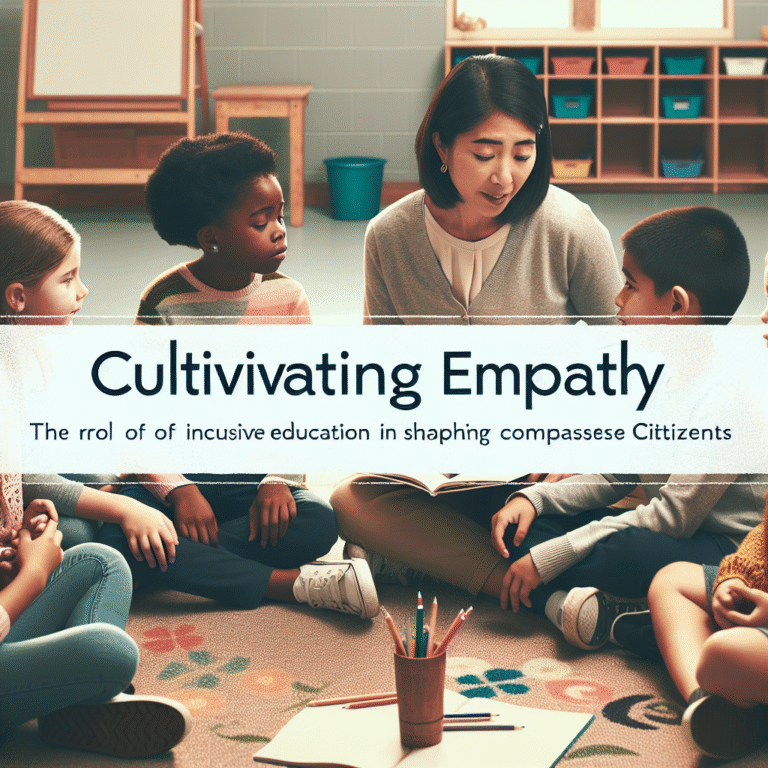
Introduction
In the rapidly evolving landscape of education, online learning has gained unprecedented traction. With this shift comes the imperative to bridge the gap between theoretical concepts and their practical application. The article From Theory to Practice: Applying Psychological Principles in E-Learning Environments delves deep into how psychological principles can be effectively employed to enhance e-learning outcomes.
Why is this important? The critical connection between understanding how we learn and implementing that knowledge effectively can redefine not just the learner’s experience but also the educator’s approach. As we explore the depths of this topic, you’ll discover strategies backed by psychological principles that can transform your e-learning environment into a vibrant and effective learning space.
Understanding the Psychological Foundations
The Role of Motivation in Learning
Motivation stands at the forefront when discussing e-learning efficacy. According to self-determination theory (SDT), learners are more engaged and achieve better results when their intrinsic motivations are satisfied. An e-learning environment that resonates with learners’ feelings of competence, autonomy, and relatedness can foster a deep desire to engage with the content.
Case Study: Gamification in Online Courses
Let’s consider a popular language learning app that utilizes gamification. By incorporating levels, badges, and a leaderboard, the learners are motivated to complete modules based on intrinsic rewards related to their progress and achievements. This aligns closely with SDT, illustrating From Theory to Practice: Applying Psychological Principles in E-Learning Environments effectively by promoting autonomy while encouraging competition and social interaction.
Cognitive Load Theory: Balancing Information Delivery
Cognitive Load Theory posits that our working memory has limitations. An e-learning environment flooded with excessive information can overwhelm learners, hindering their ability to process and retain content. Here’s where understanding the mechanics of cognitive load becomes crucial.
Table 1: Cognitive Load Types
| Type of Load | Description | Examples |
|---|---|---|
| Intrinsic Load | Complexity inherent to the material | Mathematics theorems |
| Extraneous Load | Unnecessary information that distracts | Overly detailed presentations |
| Germane Load | Efforts to make sense of information | Note-taking, summarizing |
By applying these principles to balance the elements within the e-learning platform, educators can enhance the learning process, showcasing the transition From Theory to Practice: Applying Psychological Principles in E-Learning Environments.
Social Learning Theory: The Power of Interaction
Albert Bandura’s Social Learning Theory highlights the importance of observation and modeling in learning behaviors. In an e-learning ambiance, incorporating collaborative activities can drive engagement and knowledge retention.
Case Study: Peer Collaboration in Online Education
A notable example is a nursing education platform that encourages peer-reviewed assignments and discussions. The results demonstrated a profound improvement in student performance compared to traditional learning where peer interaction was minimal. This illustrates the effectiveness of incorporating Social Learning Theory, proving once again how valuable principles are in shaping e-learning experiences.
Designing Effective E-Learning Environments
User Experience (UX): The Intersection of Psychology and Design
When creating an e-learning course, understanding user experience is paramount. A well-designed interface minimizes extraneous cognitive load and facilitates learning.
Chart 1: UX Factors Impacting Learning
| Factor | Impact on Learning |
|---|---|
| Navigation Clarity | Reduces frustration |
| Aesthetic Appeal | Enhances engagement |
| Feedback Mechanisms | Promotes self-regulation |
With a focus on these UX factors, educators can ensure that learning environments are not just functional but also inviting, making the transition From Theory to Practice: Applying Psychological Principles in E-Learning Environments seamless.
Assessment and Feedback: Tools for Growth
Timely and constructive feedback is vital in any learning process. Psychological principles suggest that immediate feedback enhances learning outcomes and boosts motivation.
Case Study: Automated Feedback Systems
Consider an online coding platform that provides instantaneous feedback on users’ code submissions. The immediate response facilitates a cycle of correction and improvement, embodying the key psychological principle of reinforcement.
Techniques for Engaging Content Delivery
Multimedia Learning: Enhancing Engagement through Variety
Mayer’s Cognitive Theory of Multimedia Learning posits that learners better understand information presented in both verbal and visual formats. This can be implemented by utilizing videos, infographics, and interactive content.
Table 2: Types of Multimedia Formats
| Format | Advantages | Example Use Case |
|---|---|---|
| Videos | Visual engagement and storytelling | Lecture recordings |
| Infographics | Quick information digestion | Class summaries |
| Interactive | Hands-on experience | Simulations in science |
By thoughtfully integrating various multimedia formats, educators can facilitate effective learning experiences that engage learners, exemplifying From Theory to Practice: Applying Psychological Principles in E-Learning Environments.
Encouraging Metacognition: Teaching Learners to Learn
Metacognitive strategies encourage learners to evaluate and regulate their own learning. By teaching learners to be aware of their thinking process, e-learning environments can promote deeper engagement with the material.
Case Study: Reflective Learning in Online Education
A university that introduced metacognitive prompts in their online courses observed a significant improvement in students’ self-assessment abilities and overall performance. This approach demonstrates how applying psychological principles to foster metacognitive skills can yield meaningful outcomes.
Conclusion
As we’ve explored, the integration of psychological principles into e-learning environments is not merely beneficial; it is essential for success. By embracing the theories and translating them into practical applications, educators can create dynamic and effective e-learning experiences.
The journey of From Theory to Practice: Applying Psychological Principles in E-Learning Environments is one of continuous improvement and innovation. As you step into the world of e-learning, remember that the foundation lies in understanding how learners think, interact, and respond. Apply these principles, and watch as your educational efforts flourish.
FAQs
1. What are psychological principles in e-learning?
Psychological principles in e-learning refer to theories or concepts, such as motivation and cognitive load, that can influence how individuals learn and retain information in an online environment.
2. How can motivation be enhanced in e-learning?
Motivation can be enhanced through various strategies, such as gamification, providing choices, and fostering a sense of community among learners.
3. What is cognitive load, and why is it important?
Cognitive load refers to the amount of information an individual can process at one time. Managing cognitive load is crucial to ensure that learners are not overwhelmed, which can hinder their learning.
4. How does social interaction affect online learning?
Social interaction, facilitated by discussion forums and collaborative projects, can enhance engagement, promote knowledge retention, and improve overall learning outcomes.
5. What role does feedback play in e-learning?
Feedback is essential for guiding learners’ progress, providing insights into their understanding, and motivating them to improve performance. Timely, constructive feedback can significantly enhance learning outcomes.
By employing the insights provided here, you can set the stage for a robust e-learning environment that truly embodies the essence of From Theory to Practice: Applying Psychological Principles in E-Learning Environments.















